Abstract
The main aim of the trial was to determine whether drug treatment of mild hypertension (phase V diastolic pressure 90-109 mm Hg) reduced the rates of stroke, of death due to hypertension, and of coronary events in men and women aged 35-64 years. Subsidiary aims were: to compare the course of blood pressure in two groups, one taking bendrofluazide and one taking propranolol, and to compare the incidence of suspected adverse reactions to these two drugs. The study was single blind and based almost entirely in general practices; 17 354 patients were recruited, and 85 572 patient years of observation have accrued. Patients were randomly allocated at entry to take bendrofluazide or propranolol or placebo tablets. The primary results were as follows. The stroke rate was reduced on active treatment: 60 strokes occurred in the treated group and 109 in the placebo group, giving rates of 1.4 and 2.6 per 1000 patient years of observation respectively (p less than 0.01 on sequential analysis). Treatment made no difference, however, to the overall rates of coronary events: 222 events occurred on active treatment and 234 in the placebo group (5.2 and 5.5 per 1000 patient years respectively). The incidence of all cardiovascular events was reduced on active treatment: 286 events occurred in the treated group and 352 in the placebo group, giving rates of 6.7 and 8.2 per 1000 patient years respectively (p less than 0.05 on sequential analysis). For mortality from all causes treatment made no difference to the rates. There were 248 deaths in the treated group and 253 in the placebo group (rates 5.8 and 5.9 per 1000 patient years respectively). Several post hoc analyses of subgroup results were also performed but they require very cautious interpretation. The all cause mortality was reduced in men on active treatment (157 deaths versus 181 in the placebo group; 7.1 and 8.2 per 1000 patient years respectively) but increased in women on active treatment (91 deaths versus 72; 4.4 and 3.5 per 1000 patient years respectively). The difference between the sexes in their response to treatment was significant (p = 0.05). Comparison of the two active drugs showed that the reduction in stroke rate on bendrofluazide was greater than that on propranolol (p = 0.002). The stroke rate was reduced in both smokers and non-smokers taking bendrofluazide but only in non-smokers taking propranolol. This difference between the responses to the two drugs was significant (p = 0.03).(ABSTRACT TRUNCATED AT 400 WORDS)
Full text
PDF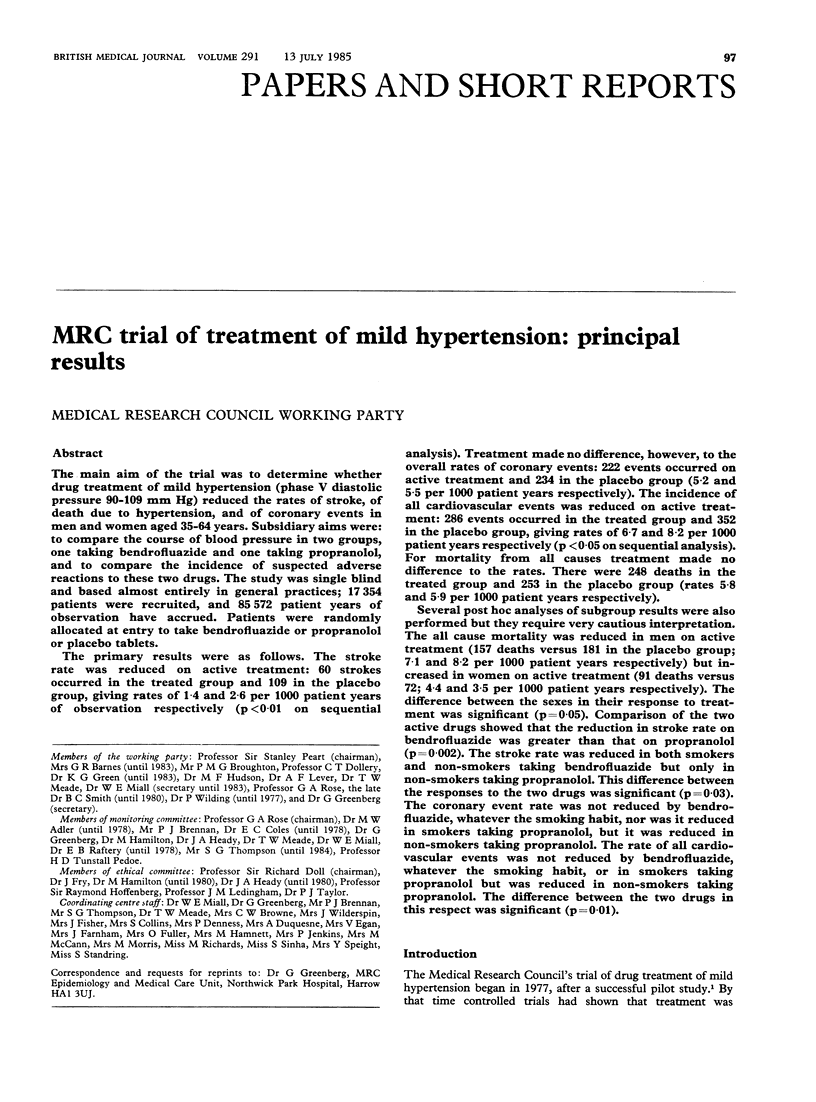
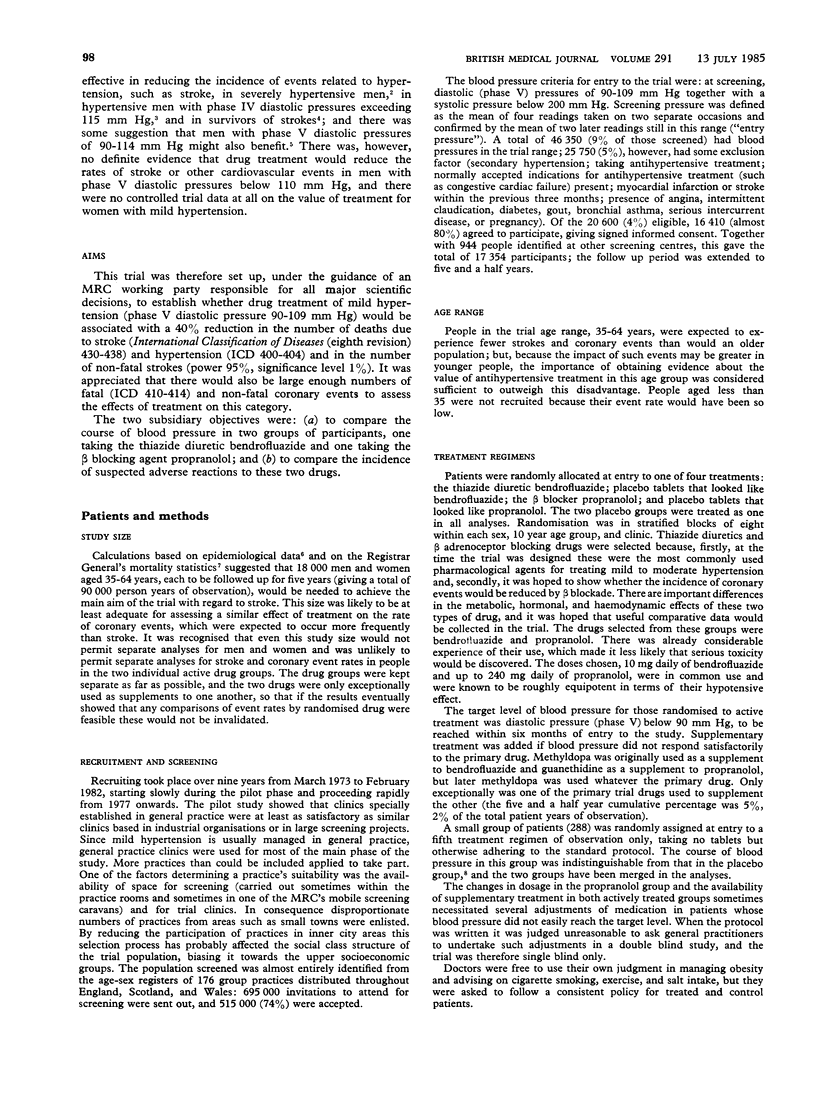
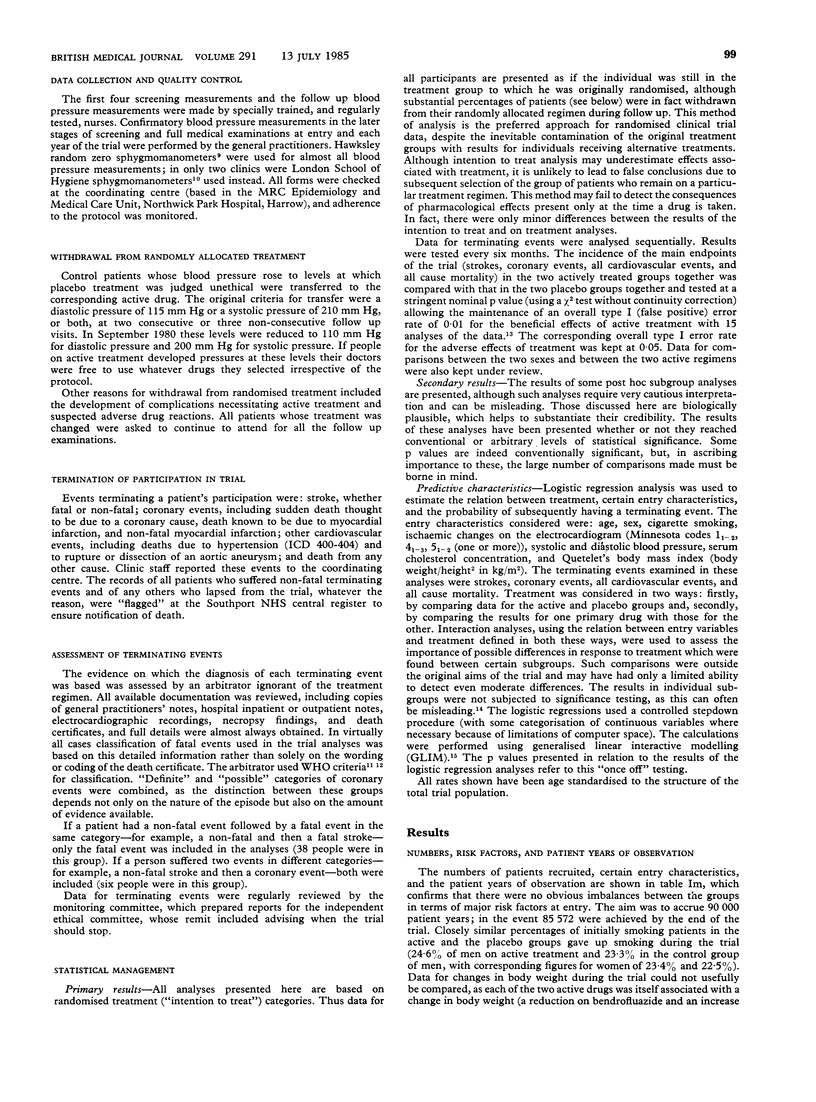
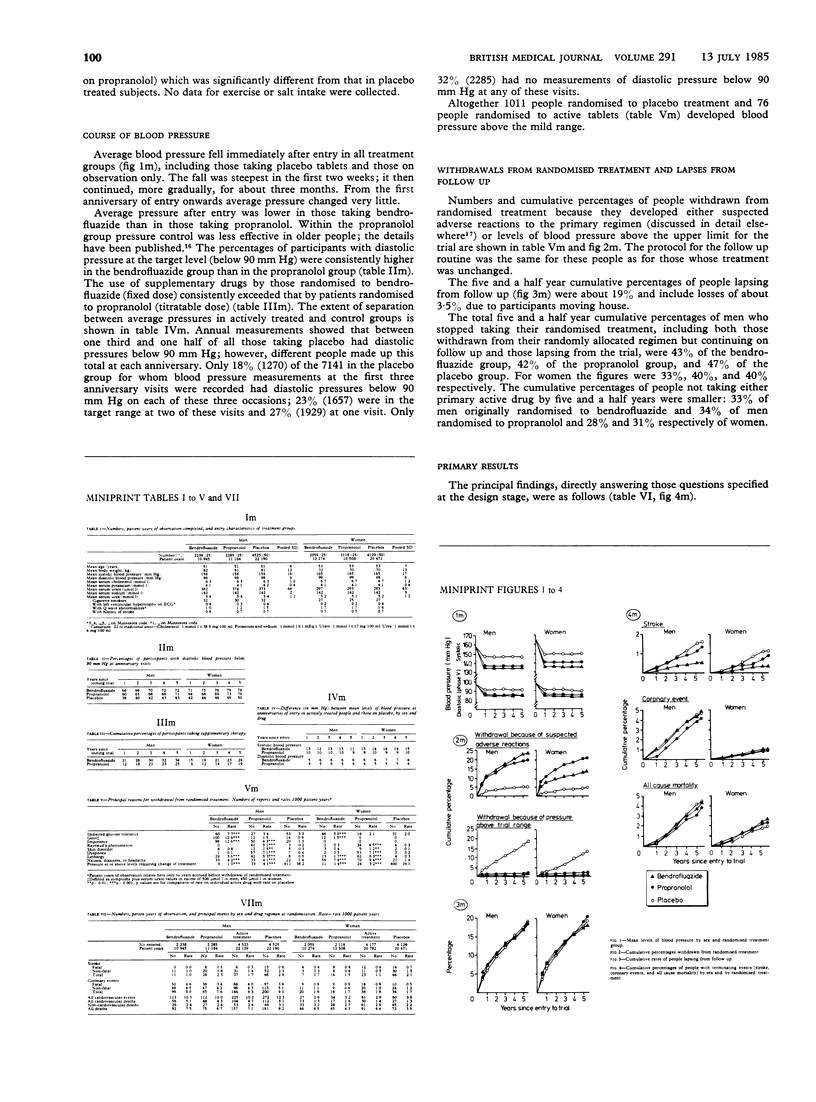
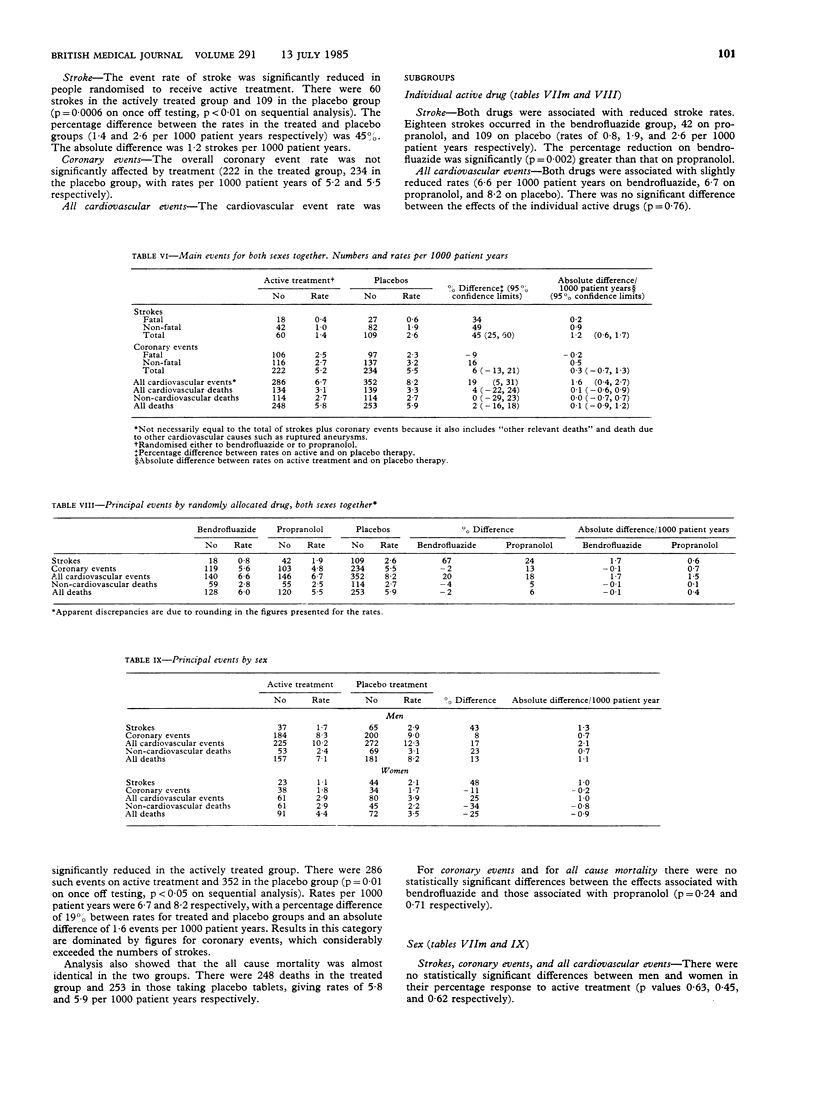
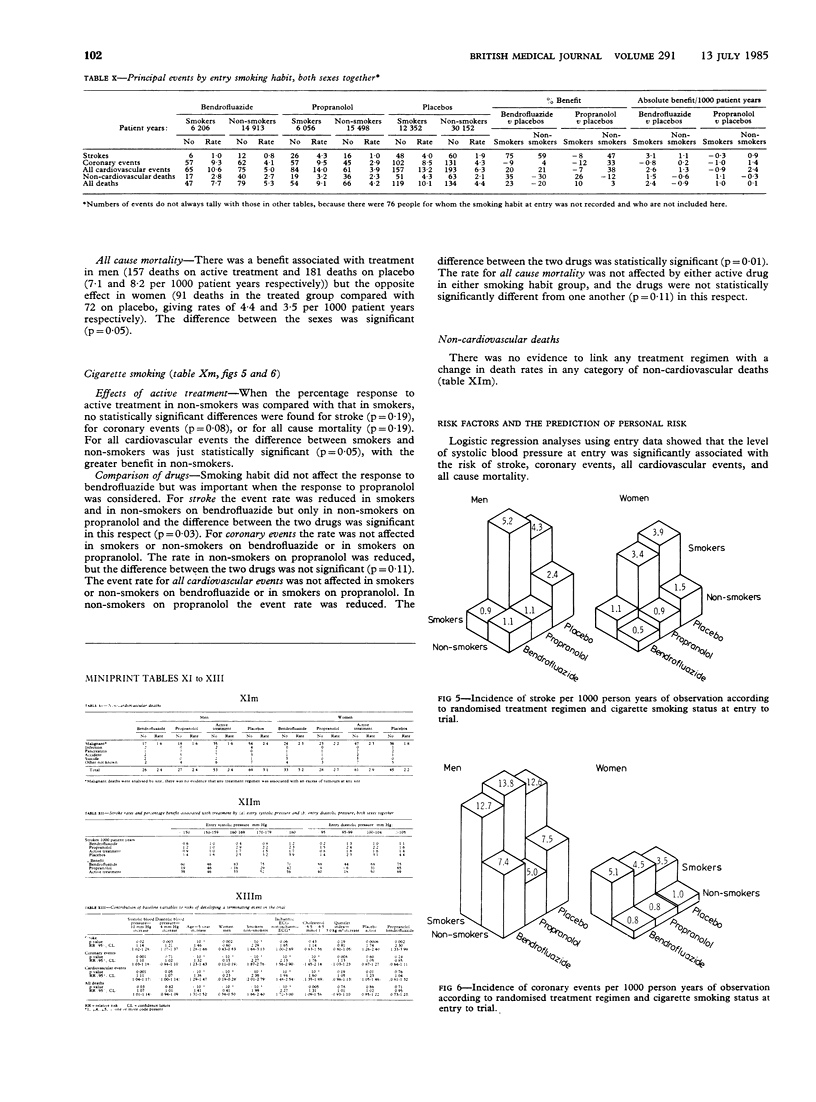
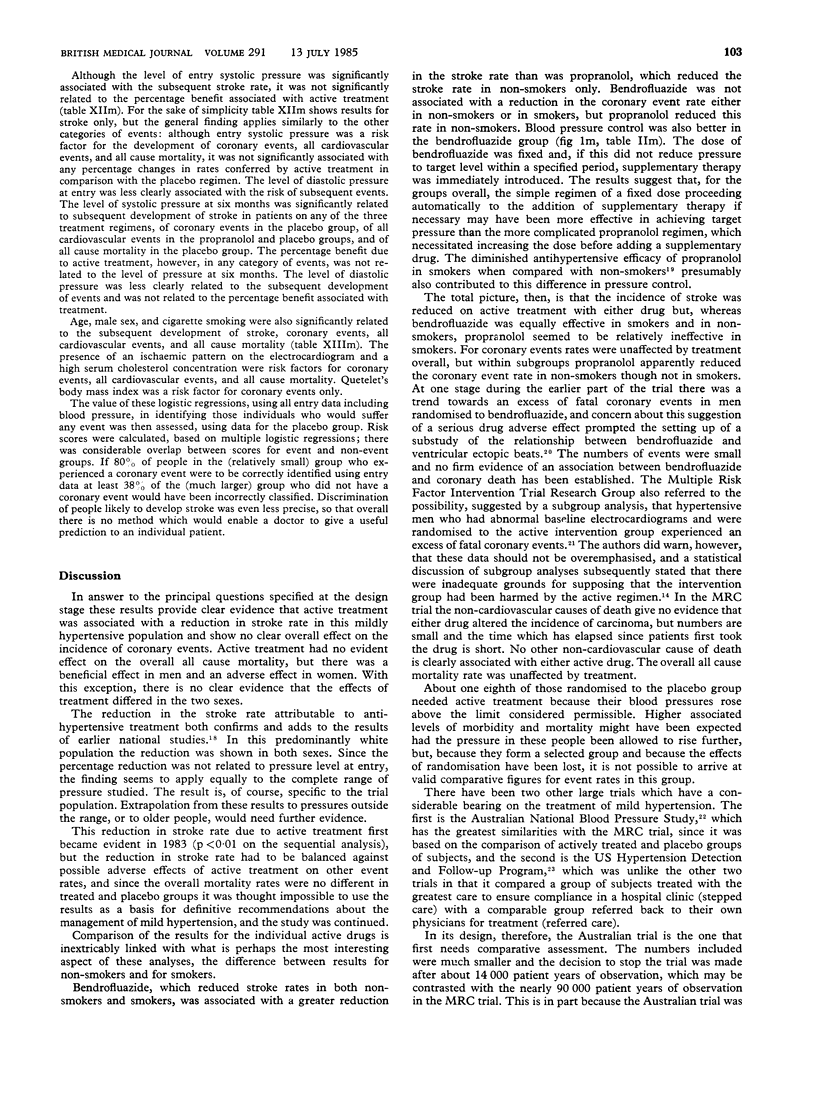
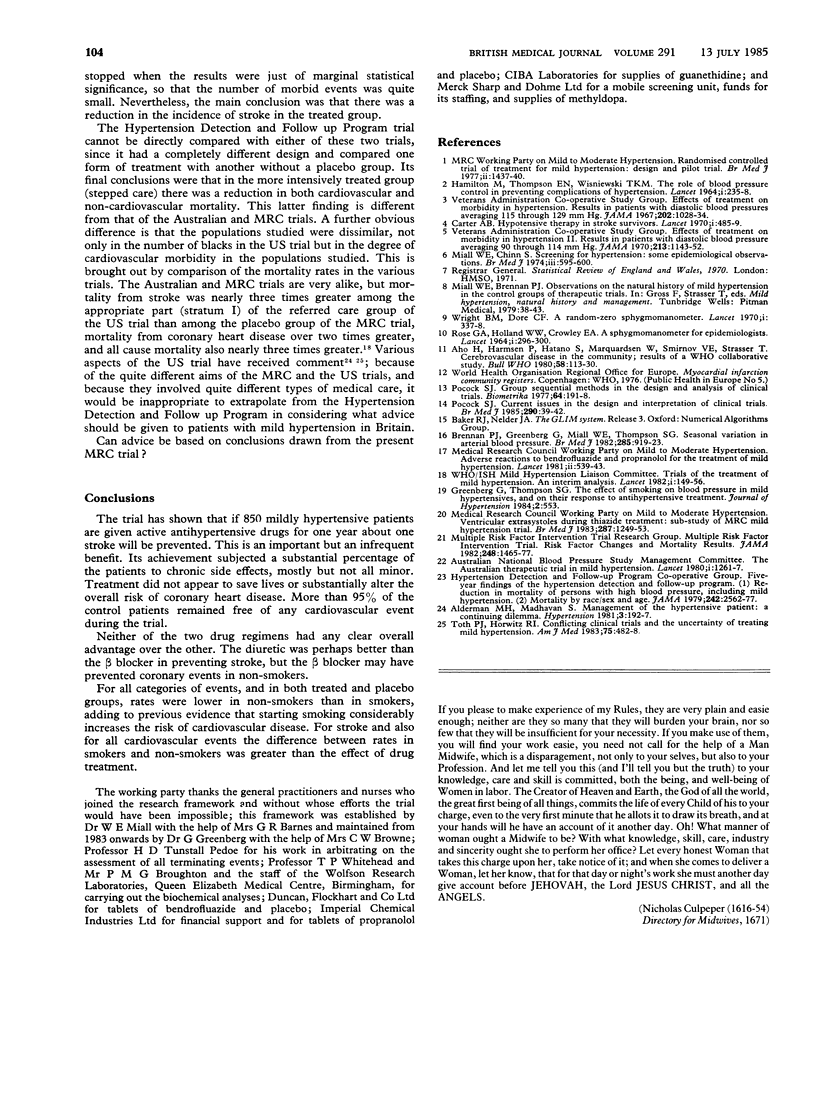
Selected References
These references are in PubMed. This may not be the complete list of references from this article.
- Aho K., Harmsen P., Hatano S., Marquardsen J., Smirnov V. E., Strasser T. Cerebrovascular disease in the community: results of a WHO collaborative study. Bull World Health Organ. 1980;58(1):113–130. [PMC free article] [PubMed] [Google Scholar]
- Alderman M. H., Madhavan S. Management of the hypertensive patient: a continuing dilemma. Hypertension. 1981 Mar-Apr;3(2):192–197. doi: 10.1161/01.hyp.3.2.192. [DOI] [PubMed] [Google Scholar]
- Annual meeting of the British Hypertension Society. Oxford, UK, 25th-26th September 1984. J Hypertens. 1984 Oct;2(5):553–563. [PubMed] [Google Scholar]
- Carter A. B. Hypotensive therapy in stroke survivors. Lancet. 1970 Mar 7;1(7645):485–489. doi: 10.1016/s0140-6736(70)91577-1. [DOI] [PubMed] [Google Scholar]
- HAMILTON M., THOMPSON E. M., WISNIEWSKI T. K. THE ROLE OF BLOOD-PRESSURE CONTROL IN PREVENTING COMPLICATIONS OF HYPERTENSION. Lancet. 1964 Feb 1;1(7327):235–238. doi: 10.1016/s0140-6736(64)92344-x. [DOI] [PubMed] [Google Scholar]
- Miall W. E., Chinn S. Screening for hypertension: some epidemiological observations. Br Med J. 1974 Sep 7;3(5931):595–600. doi: 10.1136/bmj.3.5931.595. [DOI] [PMC free article] [PubMed] [Google Scholar]
- Pocock S. J. Current issues in the design and interpretation of clinical trials. Br Med J (Clin Res Ed) 1985 Jan 5;290(6461):39–42. doi: 10.1136/bmj.290.6461.39. [DOI] [PMC free article] [PubMed] [Google Scholar]
- ROSE G. A., HOLLAND W. W., CROWLEY E. A. A SPHYGMOMANOMETER FOR EPIDEMIOLOGISTS. Lancet. 1964 Feb 8;1(7328):296–300. doi: 10.1016/s0140-6736(64)92408-0. [DOI] [PubMed] [Google Scholar]
- Toth P. J., Horwitz R. I. Conflicting clinical trials and the uncertainty of treating mild hypertension. Am J Med. 1983 Sep;75(3):482–488. doi: 10.1016/0002-9343(83)90354-6. [DOI] [PubMed] [Google Scholar]
- Wright B. M., Dore C. F. A random-zero sphygmomanometer. Lancet. 1970 Feb 14;1(7642):337–338. doi: 10.1016/s0140-6736(70)90709-9. [DOI] [PubMed] [Google Scholar]


